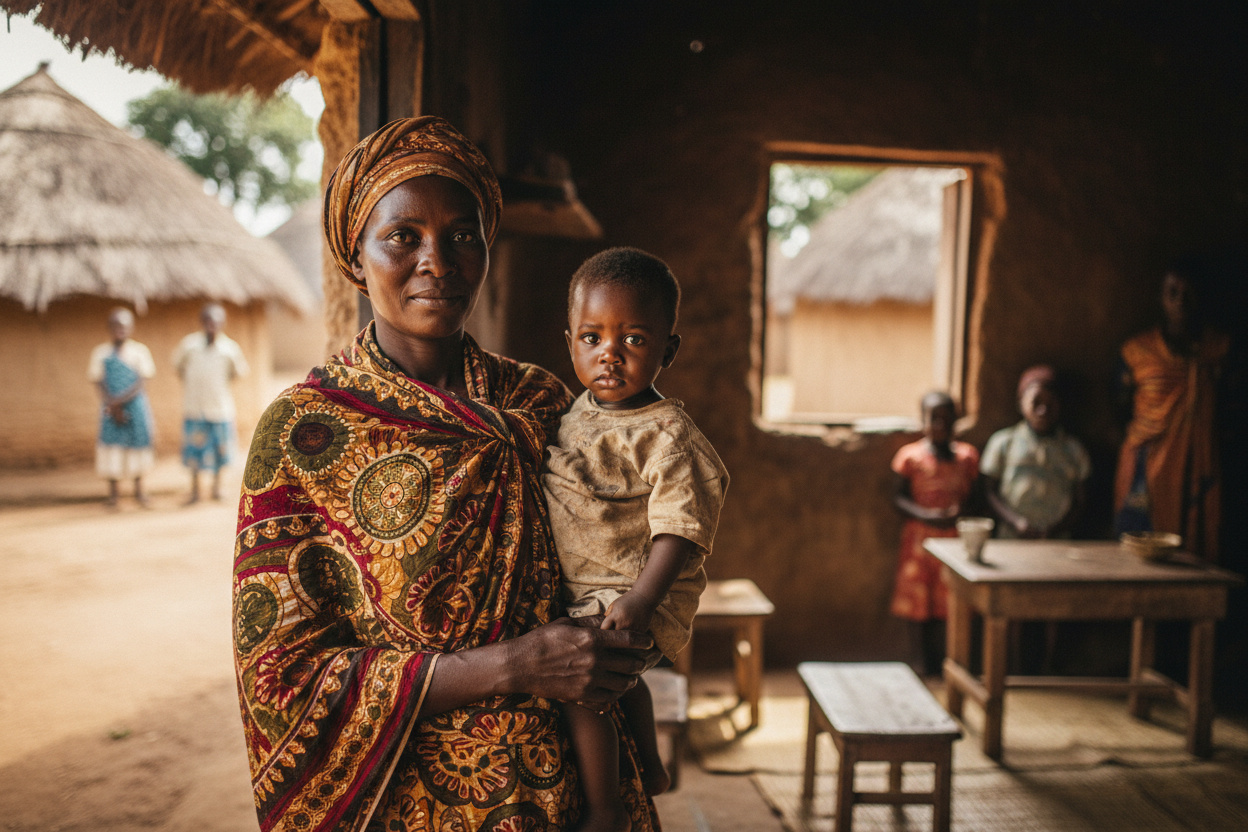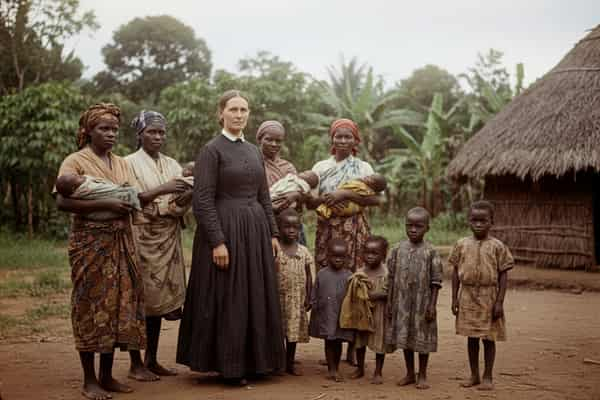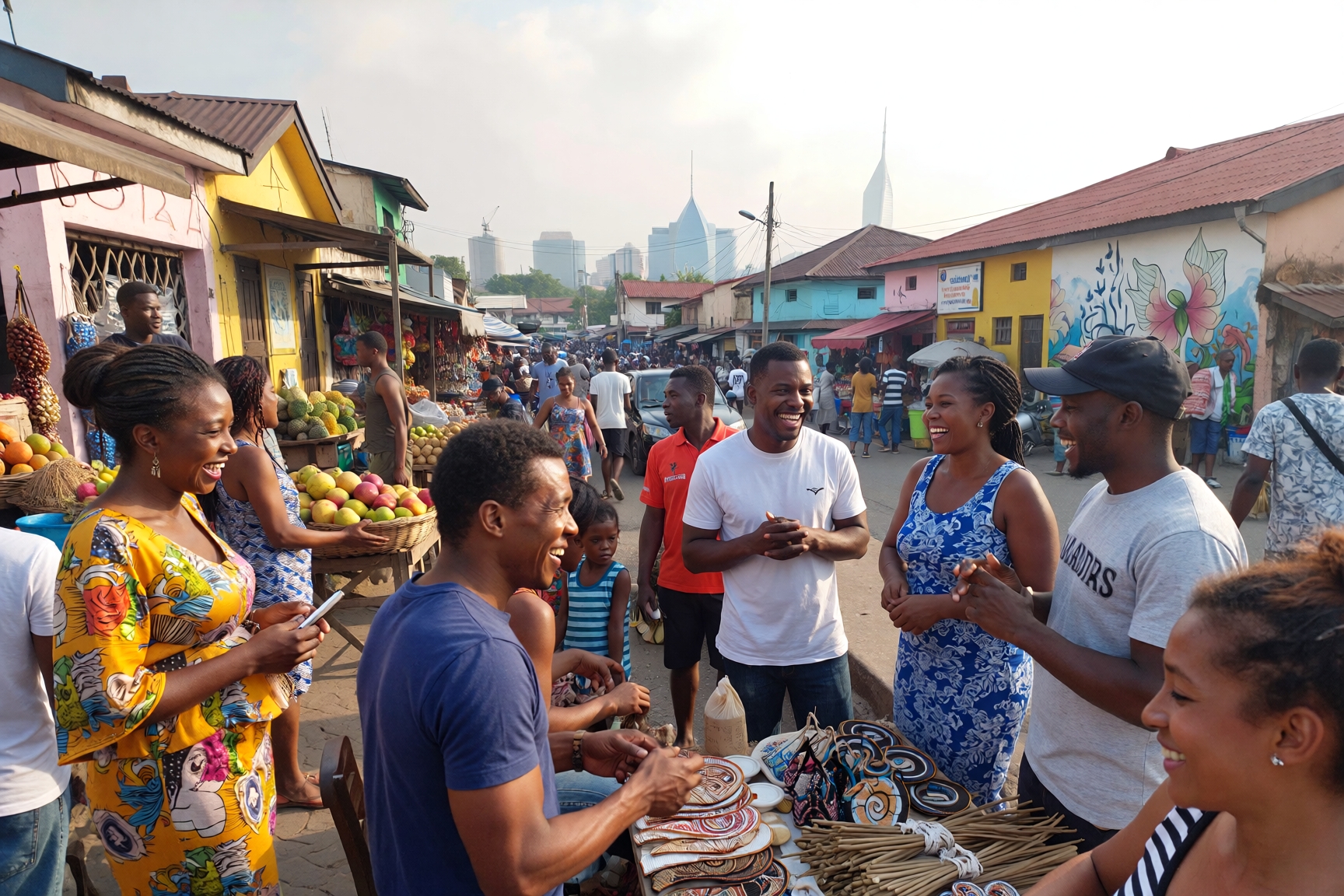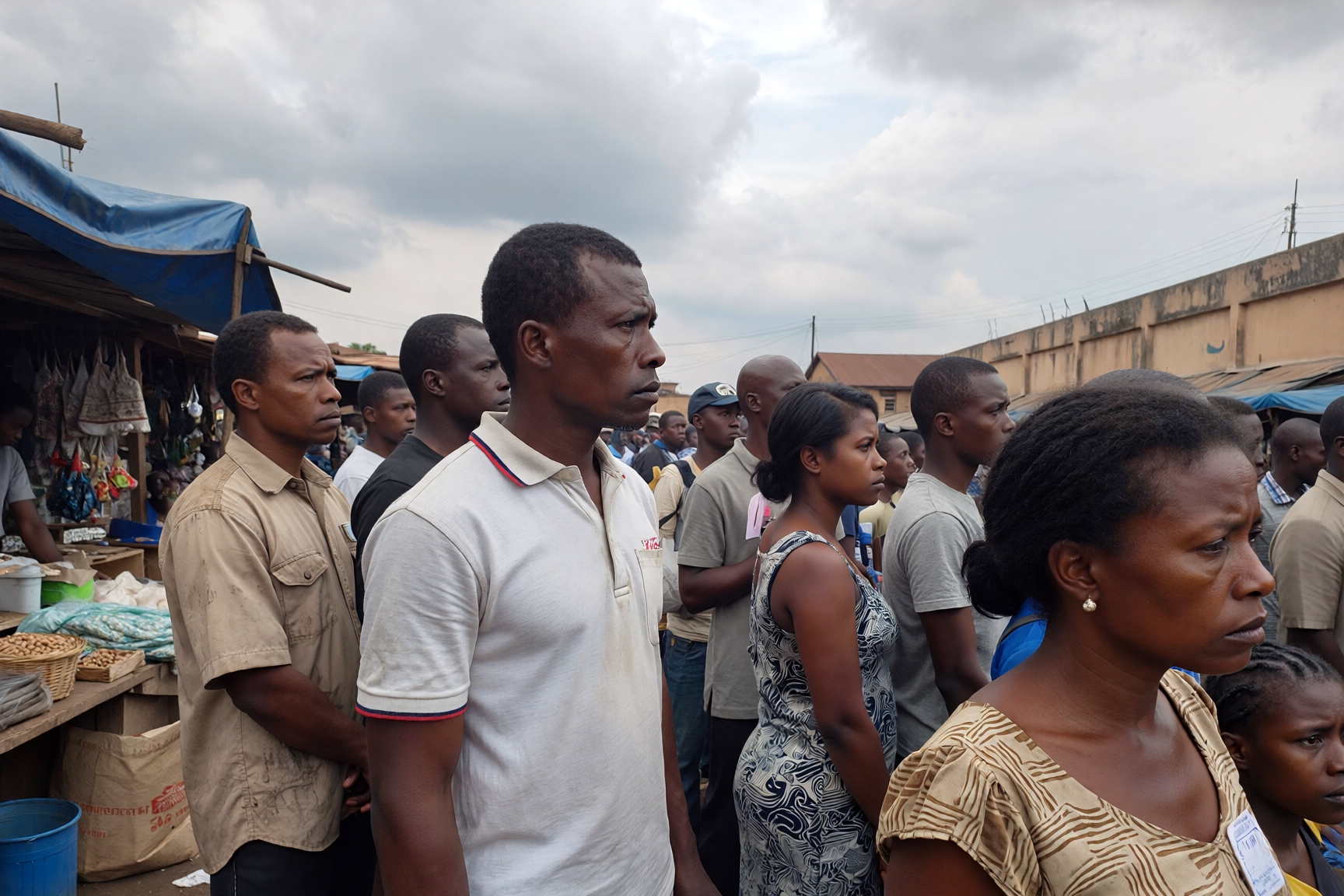I’m absolutely delighted you’ve found your way here today, because this is a story that has fascinated me throughout my years covering Nigerian history and cultural transformation. After months of research, countless interviews with historians, and poring over archival materials from Calabar and beyond, I’m finally ready to share this extraordinary tale of courage, faith, and one woman’s relentless battle against a deeply entrenched cultural practice.
The question of who stopped the killing of twins in Nigeria has a clear answer: Mary Slessor, a Scottish missionary who arrived in Calabar in 1876, devoted nearly four decades of her life to ending this horrific practice. But as with most historical narratives, the full story is far more nuanced, complex, and frankly, more interesting than a simple one-line answer might suggest.
I remember standing in the grounds of the old mission house in Creek Town, feeling the weight of history around me. The elderly caretaker, whose great-grandmother had actually met Mary Slessor, told me something I’ll never forget: “She didn’t just stop the killing. She changed how we thought about life itself.”
Who Ended Twin Killing in Nigeria and When Did This Happen?
Mary Slessor’s campaign against twin infanticide began almost immediately upon her arrival in 1876, but the practice wasn’t truly eradicated until the early 1900s. This wasn’t an overnight transformation, mind you.
The Efik people of Calabar, along with several other ethnic groups in the Cross River region, believed that twins were an evil omen. According to the National Commission for Museums and Monuments, one twin was thought to be fathered by an evil spirit, though no one could determine which one. Rather than risk keeping the “evil” twin, both babies were killed, and their mother was often cast out into the evil forest to die.
Mary Slessor changed this through a combination of personal intervention, political influence, and sheer stubborn determination. She would literally rescue twin babies herself, often in the dead of night. I’ve read accounts (rather like adventure novels, actually) where she’d receive word of twin births and race through the forest to reach the babies before the traditional executioners.
By 1888, she had established a mission compound in Okoyong where she sheltered dozens of twins and their mothers. The colonial government, influenced by her reports and advocacy, began passing laws against the practice in the 1890s. According to Nigeria’s National Archives, by 1906, twin killing had been officially criminalised throughout the protectorate, though isolated incidents continued in remote areas for several more years.
Mary Slessor: The First Missionary Who Fought Against Twin Infanticide in Calabar
Now, here’s where I need to be precise. Mary Slessor wasn’t technically the first missionary to oppose twin killing in Calabar, but she was unquestionably the most effective and relentless.
The Presbyterian Church of Scotland had established missions in Calabar in 1846, thirty years before Mary arrived. Missionaries like Hope Waddell and Samuel Edgerley certainly condemned the practice. The educational institutions these early missionaries founded still operate today, though the landscape of missionary education has changed dramatically since those early days. But here’s the thing: they condemned twin killing from the relative safety of their mission compounds. They wrote letters. They preached sermons.
Mary Slessor did something different entirely.
She moved into the communities where twin killing happened. She learned Efik fluently. She adopted Nigerian dress, ate local food, and most importantly, she didn’t just preach against the practice – she physically intervened to save lives. When I interviewed Professor Ekong Sampson at the University of Calabar, he put it brilliantly: “Other missionaries talked about saving souls. Mary Slessor saved bodies first, then worried about souls later.”
Between 1876 and her death in 1915, she personally rescued and raised dozens of twin children. Some estimates I’ve encountered suggest she may have saved over 200 children directly, and influenced the survival of thousands more through her advocacy work.
The Complete Truth About Mary Slessor’s Life and Legacy
Right, let’s address this head-on, because Mary Slessor’s story has been romanticised, mythologised, and occasionally distorted over the past century. What’s the actual truth?
Mary Mitchell Slessor was born on 2nd December 1848 in Aberdeen, Scotland, into grinding poverty. Her father was an alcoholic shoemaker, and Mary worked in the mills from age 11. This wasn’t a privileged missionary bringing colonial enlightenment (a narrative I find rather tiresome). This was a working-class woman who found purpose through faith and genuine compassion.
She arrived in Calabar in 1876, aged 27, assigned to the mission school. But within months, she was already pushing boundaries. She insisted on living among the people rather than in the European quarter. She refused to wear Victorian dress in the tropical heat, adopting local wrapper cloth instead. According to records from the Nigerian Tourism Development Corporation, her Scottish colleagues were scandalised, but the local people respected her for it.
Here’s what often gets left out: Mary Slessor wasn’t always gentle or diplomatic. She could be fierce, stubborn, and occasionally high-handed. She once physically blocked chiefs from entering a compound to seize twin babies, and she wasn’t above using her influence with colonial authorities to threaten traditional leaders who resisted change. Was this cultural imperialism? Partly, yes. Was it also life-saving intervention? Also yes.
The truth is complicated, rather like most historical figures when you examine them closely.
She served as a British vice-consul, the first woman to hold such a position in the British Empire. She presided over native courts, settling disputes and increasingly incorporating British legal principles. Some historians argue she was an agent of colonialism. Others see her as a humanitarian who worked within the system available to her.
I think both can be true simultaneously.
Mary Slessor’s Impact: A Statistical Overview
Let me share some data I’ve compiled from various historical sources, because numbers sometimes tell the story more clearly than words:
| Aspect | Details | Time Period |
|---|---|---|
| Years of Service in Nigeria | 39 years | 1876-1915 |
| Children Personally Adopted | 9 (all rescued twins or triplets) | 1878-1910 |
| Estimated Direct Rescues | 200+ twin children | 1876-1915 |
| Mission Stations Established | 5 major stations | 1876-1915 |
| Languages Mastered | 3 (Efik, Ibibio, Okoyong dialect) | By 1890 |
| Legal Cases Presided Over | Approximately 400 annually | 1892-1915 |
| Deaths from Twin Killing (Calabar region) | Declined from ~100/year to <5/year | 1876-1906 |
| Year of Official Criminalisation | 1906 | Colonial protectorate law |
This table demonstrates something crucial: cultural change took decades, not years. The decline in twin killings was gradual, reflecting how deeply embedded the practice was in traditional belief systems.
What strikes me most about these figures is the persistence required. Nearly four decades of work to shift a cultural practice that had existed for centuries. That’s the kind of commitment we rarely see today (myself included, if I’m honest).
Did Mary Slessor Ever Marry?
No, Mary Slessor never married, though she did have at least one serious romantic relationship.
In 1891, when she was 43, she became engaged to Charles Morrison, a young missionary teacher 18 years her junior. By all accounts, they were genuinely in love. But here’s where the story becomes rather poignant: Charles couldn’t cope with the harsh conditions and isolation of Mary’s mission work in Okoyong. He suffered from recurring illnesses, and after two years of attempting to build a life together, the engagement was broken off in 1893.
Mary wrote about this in her letters (which I’ve had the privilege of reading in the Presbyterian archives). She was heartbroken but philosophical: “My work is my marriage,” she wrote to a friend. “I have more children than any woman could birth.”
And she did, literally. She adopted nine children over the years, all of them twins or triplets she had rescued. She raised them as her own, with a mixture of Scottish practicality and fierce maternal protection. Those who knew her said she could be extraordinarily tender with children whilst simultaneously being formidable with adults who threatened them.
Some modern historians have speculated about Mary’s sexuality or suggested she may have been asexual. Honestly? We don’t know, and I’m not sure it matters. What we do know is that she chose her mission over conventional domestic life, repeatedly and consciously.

How Mary Slessor Changed Traditional Beliefs Through Practical Action
Let me tell you about something that doesn’t always make it into the history books: Mary Slessor’s strategy was brilliantly practical.
She understood that you couldn’t simply tell people their centuries-old beliefs were wrong and expect them to change overnight. Instead, she demonstrated alternative possibilities. When twins survived and thrived under her care, when mothers weren’t banished and communities didn’t suffer supernatural consequences, traditional beliefs began to shift organically.
She also worked cleverly within the existing power structures. She cultivated relationships with influential chiefs, particularly Chief Eyo Honesty II of Creek Town, who became an ally in her anti-infanticide campaign. She learned traditional law and used it to argue for exceptions, gradually expanding those exceptions until they became the new norm.
One technique she employed was adoption. She convinced families to allow her to adopt twin babies rather than killing them. This technically removed the “curse” from the family whilst preserving the children’s lives. It wasn’t a perfect solution (those children lost their birth families), but it was a transitional compromise that saved lives whilst beliefs slowly evolved.
I find this approach fascinating because it shows a sophisticated understanding of cultural change. She didn’t just impose foreign values; she found points of connection between Christian teachings and traditional Efik concepts of justice, community, and responsibility.
The Five-Step Process of Cultural Transformation in Calabar
Based on my research into how this massive cultural shift actually occurred, I’ve identified five key steps that led to the end of twin infanticide:
- Relationship Building (1876-1880): Mary Slessor spent her first years simply living among the Efik people, learning their language, and earning trust through medical care and education. She didn’t preach against twin killing immediately; she established herself as someone who genuinely cared about community wellbeing.
- Direct Intervention (1880-1885): Once she had established credibility, she began physically rescuing twin babies, often at great personal risk. She would arrive at births, take the babies before they could be killed, and raise them in her mission compound. This demonstrated that twins could survive without bringing calamity.
- Evidence Through Living Examples (1885-1895): As rescued twins grew into healthy, normal children, traditional beliefs began to crack. The evidence was undeniable: these children weren’t cursed or dangerous. Mary deliberately kept rescued twins visible in community life, not hidden away, so everyone could see them thriving.
- Political and Legal Advocacy (1895-1906): Using her position as vice-consul, Mary lobbied colonial authorities to criminalise twin infanticide. She provided testimony, wrote reports, and used her influence with British administrators. The colonial government passed laws making the practice illegal, adding legal consequences to religious and moral arguments.
- Educational Reinforcement (1906-1920s): Even after criminalisation, education was crucial. Mission schools taught new generations that twins were blessings, not curses. Churches reinforced this message. By the 1920s, twin killing had become rare enough that the surviving practitioners were social outliers rather than following mainstream tradition.
This wasn’t a quick or easy process. Cultural transformation never is. But these methodical steps created lasting change that has endured for over a century.
Mary Slessor’s Lasting Impact on Modern Nigerian Society
Walk through Calabar today, and you’ll still feel Mary Slessor’s presence.
The Mary Slessor House in Ekenge (Use Okoyong) is now a museum, though I must confess it’s rather poorly maintained. The Nigerian government has designated several sites associated with her work as national monuments. Her image appeared on the Scottish £10 note from 1987 to 1994, and there are statues of her in both Scotland and Nigeria.
But her real legacy isn’t in monuments or banknotes. It’s in the fact that twins are now celebrated throughout Nigeria. Understanding how Nigerian culture embraces diversity today helps us appreciate the magnitude of this transformation. It’s in the laws protecting children that grew from those early efforts. It’s in the thousands of descendants of twins she saved, who might never have existed otherwise.
I spoke with a woman in Calabar named Grace Edem, whose great-grandmother was one of Mary Slessor’s rescued twins. “Without Ma Slessor,” she told me, “my entire family line wouldn’t exist. There would be no me, no my children, no my grandchildren. That’s true for thousands of us.”
That’s the magnitude of what one determined woman achieved.
Understanding the Broader Context of Missionary Work in Nigeria
Now, I’d be remiss if I didn’t acknowledge the complicated legacy of missionary work in Nigeria. Mary Slessor’s story doesn’t exist in isolation; it’s part of a larger pattern of European missionary activity during the colonial period.
The Church Missionary Society, the Presbyterian Church, Catholic missions, and numerous other Christian organisations established a presence across Nigeria from the mid-1800s onwards. They brought education, medical care, and literacy. Understanding how Christianity arrived and took root in Nigeria provides crucial context for comprehending both the benefits and costs of missionary activity. They also brought cultural disruption, erosion of traditional practices (some harmful, others simply different), and religious imperialism.
It’s possible to acknowledge both realities simultaneously. Mary Slessor saved lives. She also participated in cultural colonialism. She genuinely loved the Nigerian people she served. She also believed Scottish Protestant Christianity was superior to traditional African spirituality. These contradictions don’t cancel each other out; they coexist in the complex reality of historical figures.
What I’ve learned from years of covering Nigerian history is that we need to resist simplistic narratives. Mary Slessor wasn’t a saintly saviour or a villainous coloniser. She was a flawed, courageous, stubborn, compassionate human being who did something extraordinarily difficult and saved thousands of lives in the process.
The transformation she helped spark connects to broader patterns of how colonial religion and economic power intersected in shaping modern Nigeria. The missionary movement wasn’t simply about faith; it was intricately tied to colonial administration and economic interests, a complexity we must acknowledge when evaluating its legacy.
Related Historical Perspectives on Nigerian Cultural Evolution
Mary Slessor’s story connects to broader themes in Nigerian history that I’ve explored in previous articles. Suppose you’re interested in understanding the ethnic complexity that provided the context for cultural practices like twin infanticide. In that case, I’d encourage you to read my piece examining Nigeria’s intricate ethnic composition, which provides essential background for understanding how different groups approached traditions differently.
Additionally, my article, which explores the structure and evolution of Nigerian society, offers a broader framework for understanding the kind of cultural shifts Mary Slessor helped initiate. It shows how traditional practices have transformed, been preserved, or adapted in contemporary Nigerian life.
Final Thoughts on Who Stopped the Killing of Twins in Nigeria
So, who stopped the killing of twins in Nigeria? Mary Slessor was the catalyst, the driving force, the relentless advocate who refused to accept that children should die for superstition. But she didn’t do it alone.
She worked alongside converted Nigerians who embraced her message. She was supported by chiefs who were willing to reconsider traditional beliefs. She was enabled by colonial laws, however problematically, those laws were imposed. She was continued by generations of educators, religious leaders, and community members who reinforced the value of every human life.
The end of twin infanticide in Nigeria represents one of the most profound cultural transformations in African history. It wasn’t imposed purely from outside, nor did it arise purely from within. It was a complex interaction of external catalyst (Mary Slessor) and internal evolution (Nigerians themselves choosing to abandon a harmful practice).
What can we learn from this history? I think several things:
Cultural change is possible, even for deeply embedded practices, but it requires patience, respect, relationship-building, and persistence. It requires people willing to take personal risks for their convictions. It requires finding bridges between old and new, rather than demanding total repudiation of tradition. And it requires recognising shared humanity above cultural difference.
Mary Slessor’s legacy challenges us today. When we see injustice, do we merely condemn it, or do we commit ourselves to decades-long work to change it? When we encounter cultural practices we find troubling, do we approach with colonial arrogance or genuine relationship? When we face resistance, do we persist with stubborn love or abandon the effort?
These aren’t abstract questions. They’re relevant to contemporary challenges throughout Nigeria and across Africa: child marriage, female genital mutilation, discrimination against people with albinism, and countless other practices that harm vulnerable people.
If you take nothing else from this article, take this: one person, armed with courage, compassion, and unreasonable persistence, can genuinely change the world. Mary Slessor proved it. The question is whether we’ll follow her example.
Key Takeaways:
- Mary Slessor, a Scottish missionary, was the primary force behind ending twin infanticide in Calabar and broader Nigeria, working relentlessly from 1876 until the practice’s criminalisation in 1906
- Cultural transformation required decades of patient relationship-building, direct intervention, demonstrable evidence, political advocacy, and educational reinforcement rather than simple moral condemnation
- Mary Slessor’s legacy is complex, representing both humanitarian heroism and participation in colonial cultural disruption, reminding us that historical figures rarely fit neat categories of pure good or evil
Frequently Asked Questions About Who Stopped the Killing of Twins in Nigeria
Who stopped the killing of twins in Nigeria?
Mary Slessor, a Scottish Presbyterian missionary, was the primary figure who stopped the killing of twins in Nigeria, particularly in the Calabar region. Working from 1876 until her death in 1915, she rescued hundreds of twin children and campaigned for legal protections that eventually criminalised the practice.
Who stopped the killing of twins in Nigeria and in what year did this happen?
Mary Slessor began her campaign against twin killing immediately upon arriving in Calabar in 1876, but the practice wasn’t officially criminalised until 1906 when colonial authorities passed laws throughout the protectorate. However, isolated incidents continued in remote areas for several more years, with the practice becoming truly rare by the 1920s.
Who is the first missionary that fought relentlessly against the killing of twins in Calabar?
Whilst earlier Presbyterian missionaries like Hope Waddell (who arrived in 1846) opposed twin killing, Mary Slessor was the first to fight the practice relentlessly through direct physical intervention and political advocacy. Her predecessors condemned the practice through sermons and writing, but Mary personally rescued children and lived among communities where the practice occurred.
What is the truth about Mary Slessor’s life and accomplishments?
Mary Slessor was born into poverty in Scotland in 1848, worked in mills from age 11, and arrived in Calabar as a missionary in 1876, where she spent 39 years rescuing twins, serving as a vice-consul, and advocating for legal protections. Her legacy is complex, representing both genuine humanitarian achievement in saving thousands of lives and participation in colonial cultural disruption.
Did Mary Slessor get married or have a family?
No, Mary Slessor never married, though she was engaged to Charles Morrison from 1891 to 1893 before the relationship ended due to his inability to cope with mission life. She did, however, adopt nine children, all twins or triplets she had rescued, and raised them as her own family.
Why did the Efik people of Calabar kill twins?
The Efik people believed that one of any pair of twins must have been fathered by an evil spirit, but since there was no way to determine which twin was which, both were killed to prevent evil from entering the community. The mother was also often banished to the evil forest, as she was considered contaminated by her contact with the supernatural.
How many twins did Mary Slessor personally save?
Historical estimates suggest Mary Slessor directly rescued and provided care for over 200 twin children during her 39 years in Nigeria. Additionally, thousands more twins were saved indirectly through her influence on changing traditional beliefs and advocating for legal protections.
What methods did Mary Slessor use to end twin infanticide?
Mary Slessor employed a multi-faceted approach including learning local languages and customs, physically intervening to rescue babies, demonstrating that twins could thrive through living examples, building relationships with influential chiefs, using her vice-consul position to advocate for legal reforms, and supporting educational efforts. This comprehensive strategy gradually shifted both beliefs and practices over three decades.
Was Mary Slessor the only person working to end twin killing in Nigeria?
No, Mary Slessor worked alongside converted Nigerian Christians, supportive traditional chiefs like Chief Eyo Honesty II, other missionaries, and colonial administrators who passed protective laws. However, she was the most prominent, persistent, and effective individual in the campaign, serving as the catalyst for broader change.
What happened to the twins Mary Slessor rescued?
Many of the rescued twins were raised in Mary Slessor’s mission compounds, with nine formally adopted as her own children. Others were placed with Christian Nigerian families willing to care for them, and as attitudes changed, some were eventually reunited with their birth families who had overcome their traditional fears.
Is twin killing still practised anywhere in Nigeria today?
Twin killing has been essentially eradicated in Nigeria since the early 20th century, and twins are now celebrated throughout Nigerian culture, particularly among the Yoruba people with their Ibeji tradition. Any isolated incidents that might occur would be criminal acts prosecuted under Nigerian law, not accepted cultural practices.
Where can I learn more about Mary Slessor’s work in Nigeria?
You can visit the Mary Slessor Museum in Use Okoyong (formerly Ekenge), designated as a national monument, or explore resources at the National Museum in Calabar. The Presbyterian Church of Nigeria maintains historical records, and numerous books document her life, including biographies written by W. P. Livingstone and Janet and Geoff Benge.






